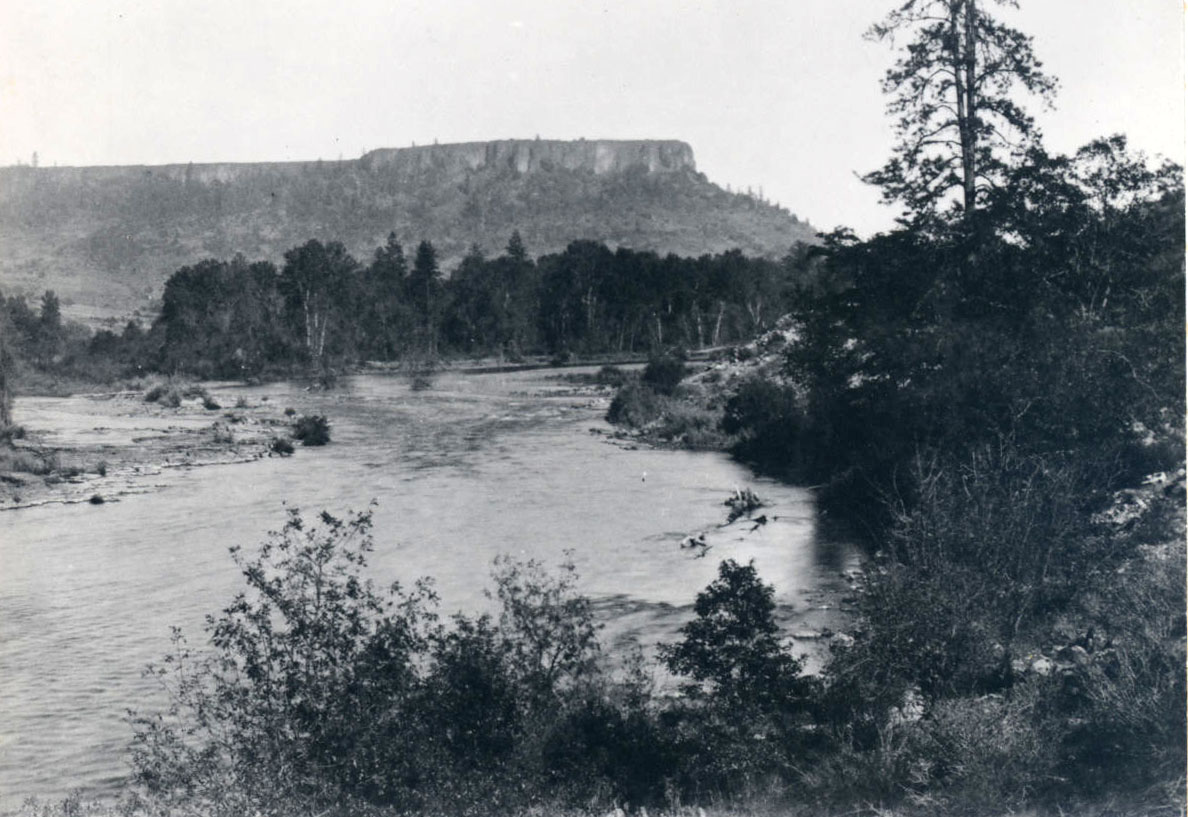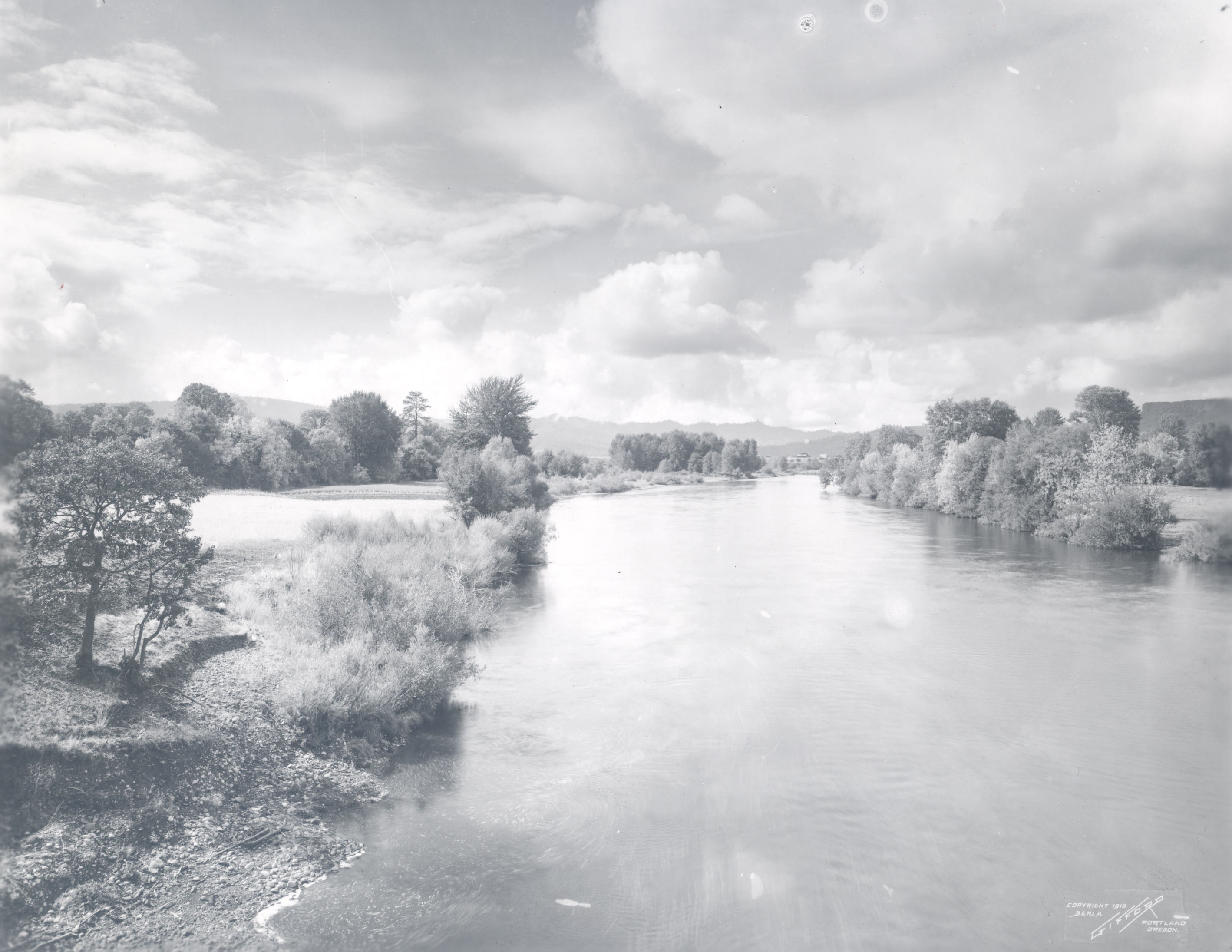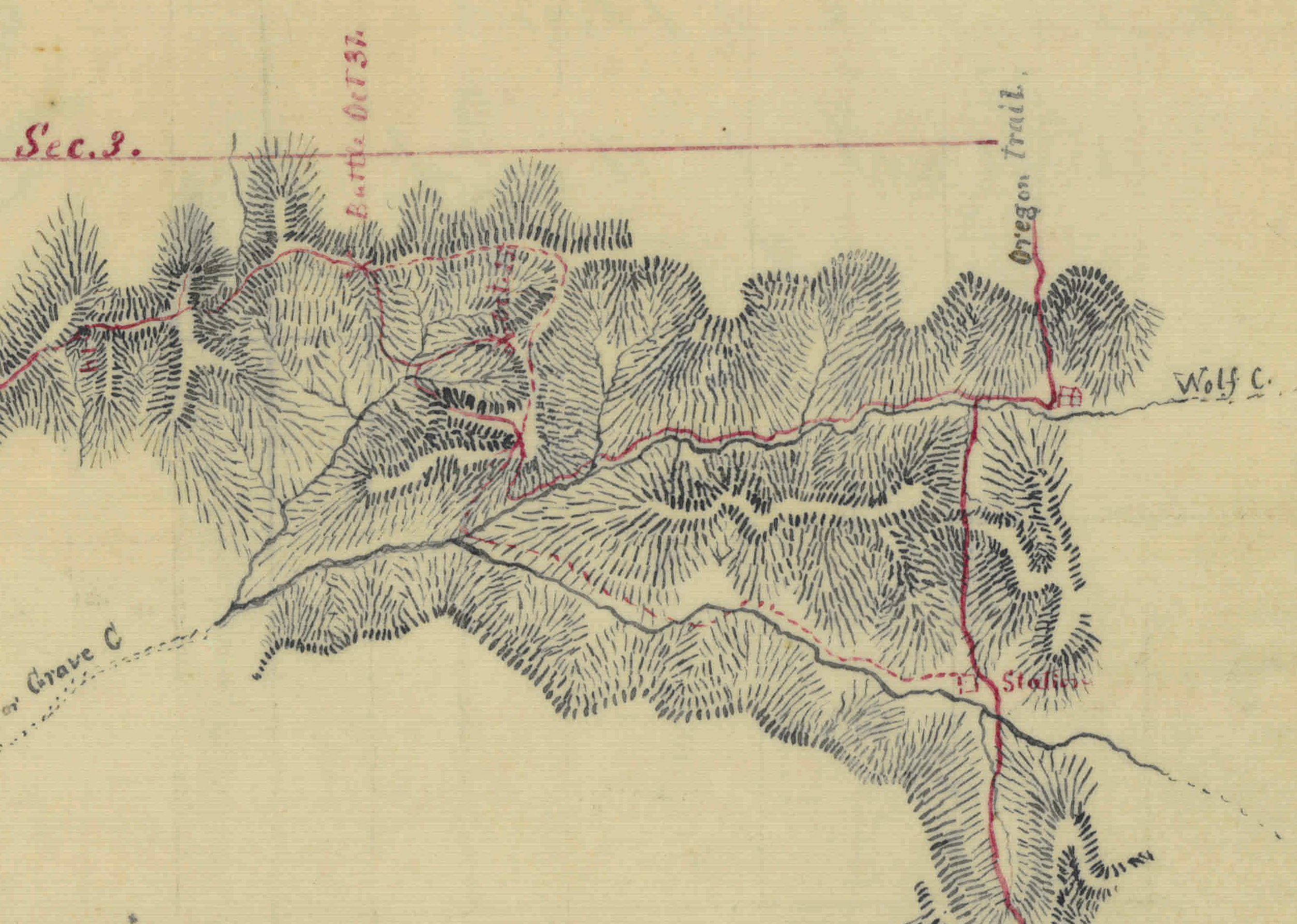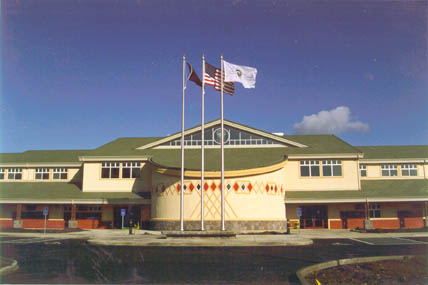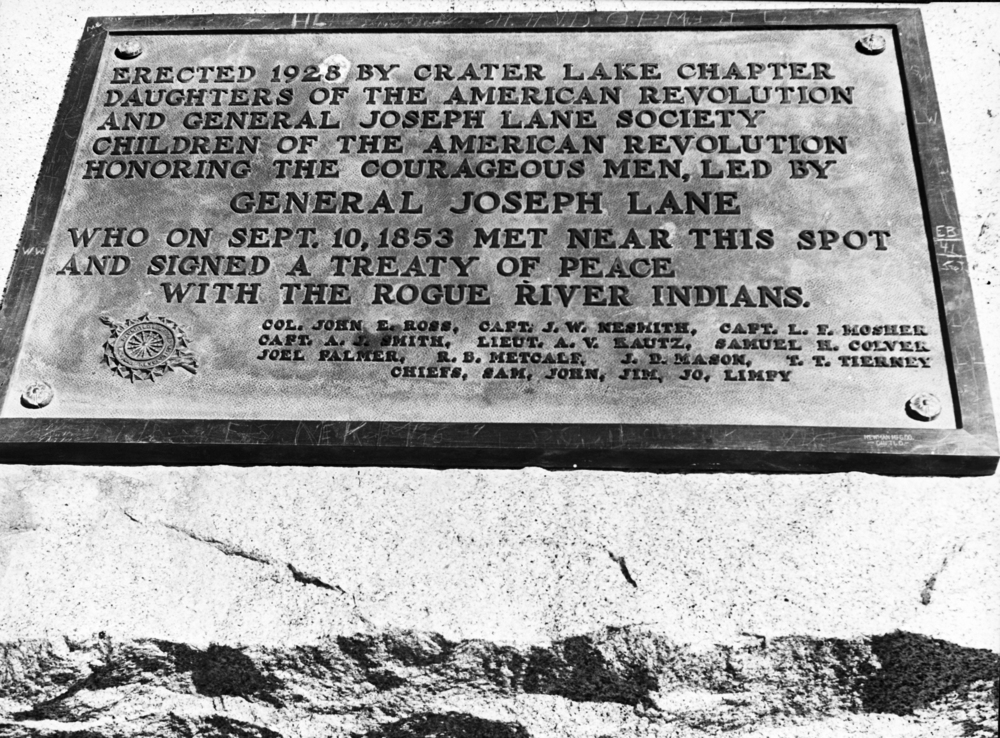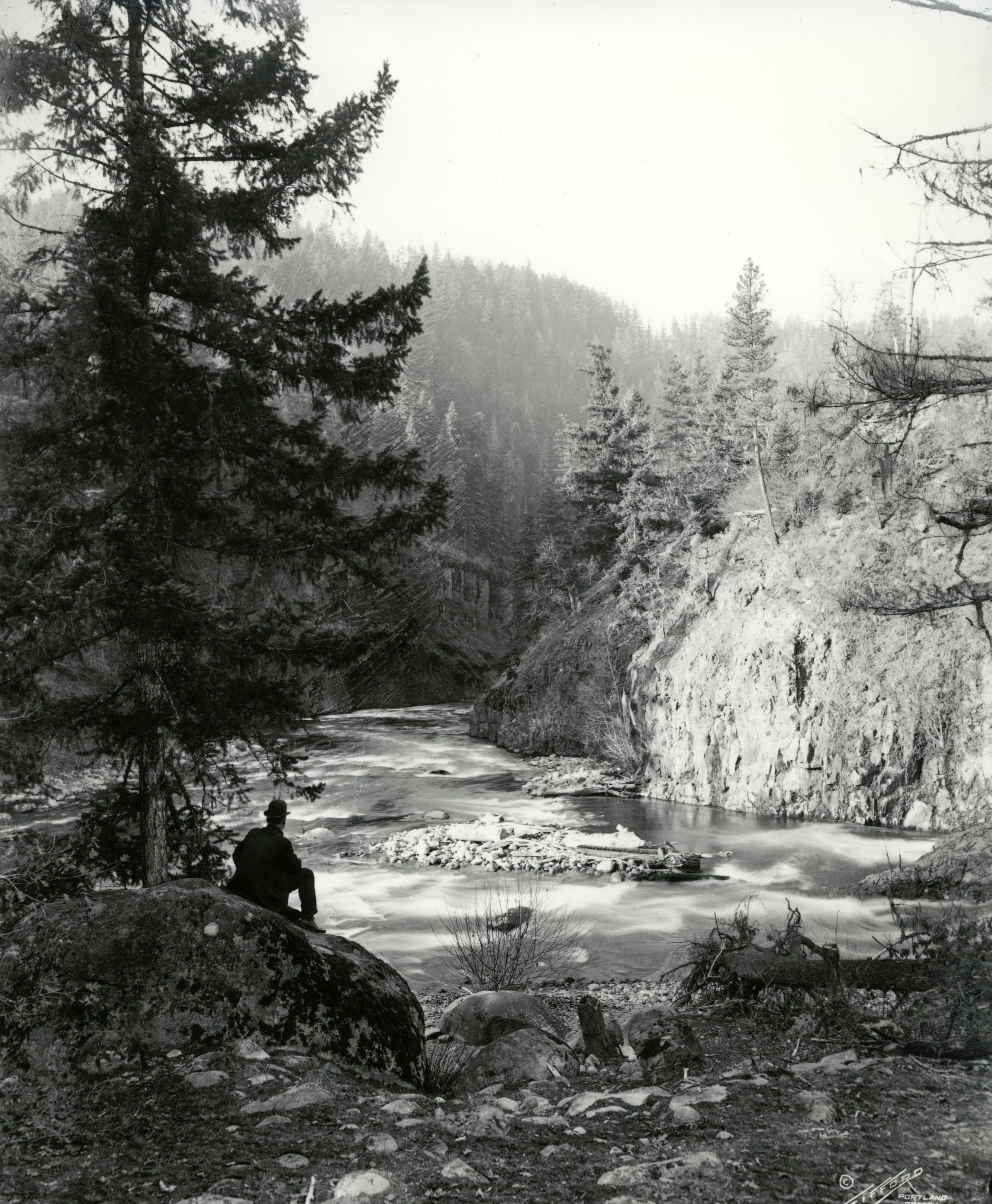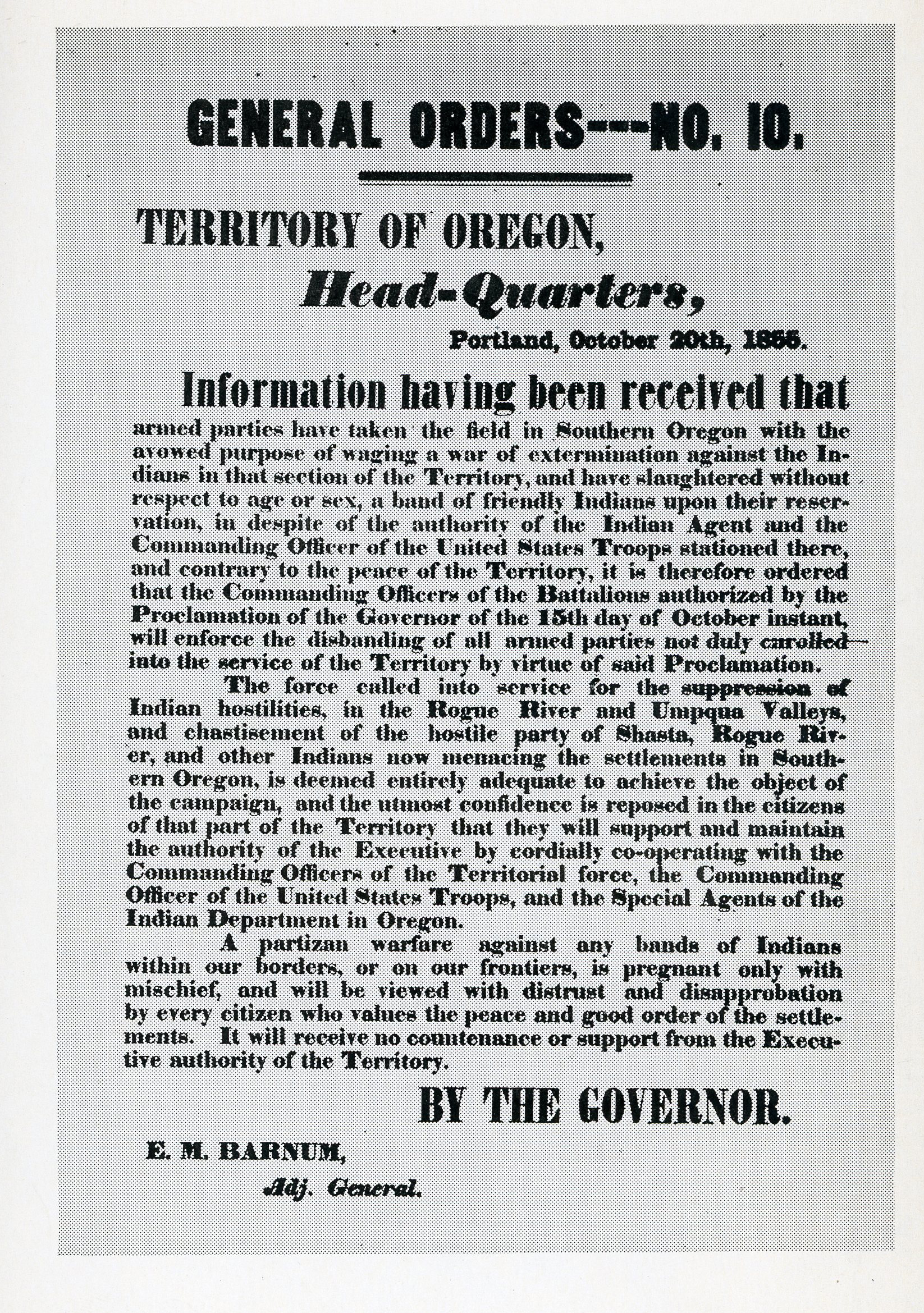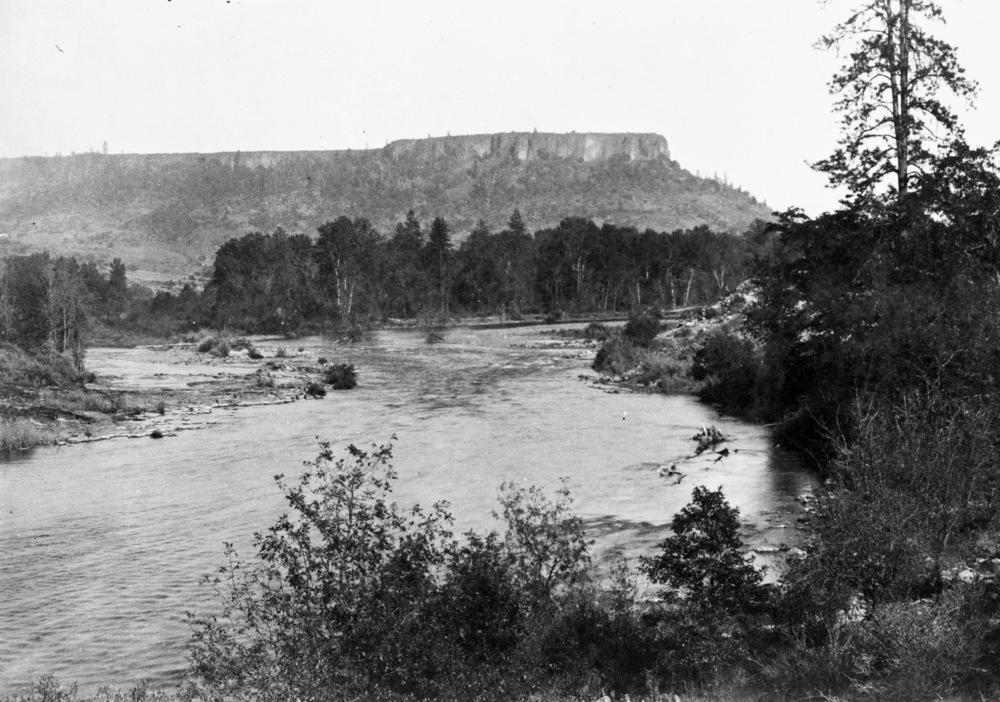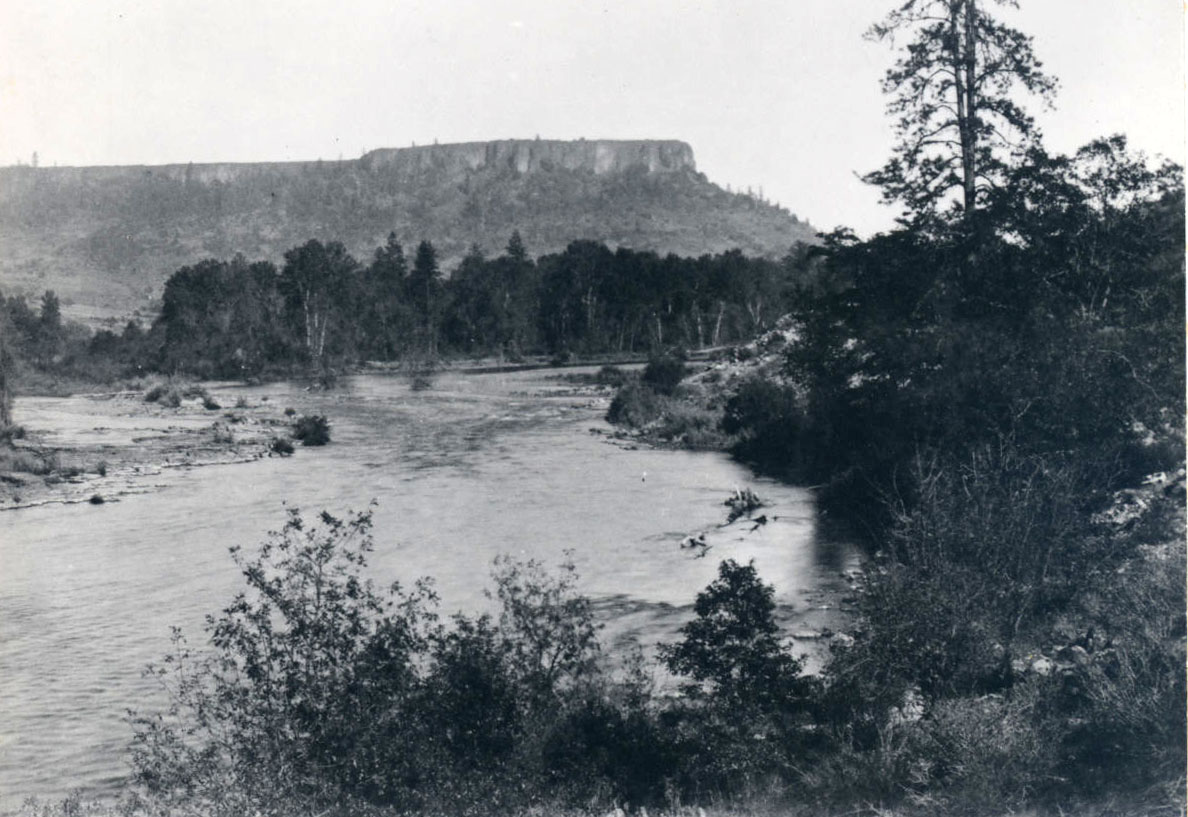Tecumtum, whose name means Elk Killer, was the principal chief of the Etch-ka-taw-wah band of Athabaskan Indians during the Rogue River War in the mid-1850s. He was known by various names, including Te-cum-tom, Chief John, Old John, and Tyee John. As a chief of his tribe, he signed three treaties with the United States: the Treaty with the Rogue River in 1851, the Treaty with the Rogue River in 1853, and the Treaty with the Rogue River in 1854. He is remembered as a powerful leader who fought for the sovereign rights of southwestern Native peoples, and his military acumen and refusal to submit to conquest place him at the forefront of tribal leaders in Pacific Northwest history.
Conflicts between the area tribes—Takelmas, Athapaskans, and Shastas—and early white settlers in the 1840s were sporadic. In the early 1850s, there were some genial relations; and Tecumtum, known as Chief John, and his children—at least four sons and two daughters—were regular visitors to Jacksonville, where the sons were known for befriending a white boy, Danny Giles, and helping him recover from an illness. But conflicts became more common as more settlers and gold miners moved into the Rogue River and Illinois valleys, displacing tribes from their hunting, gathering, and living areas.
On January 18, 1854, miners attacked the village at Deer Creek. By May, Tecumtum’s band was hiding in the mountains and suffering without supplies, chased there by California volunteer militia. Many Indians died in small skirmishes with settlers and miners who believed that the tribes should be exterminated. For security, Tecumtum’s band of sixty-three people moved onto the Table Rock Reservation in September 1854.
Living on the reservation was difficult. With few provisions offered by the U.S. government, people began leaving the reservation to find food. In the summer of 1855, Tecumtum’s people regularly traveled between the Illinois and the Rogue Valleys and were blamed for numerous thefts and small conflicts with settlers. On October 7, 1855, at least four volunteer militias attacked and massacred over a hundred Indians in an attempt to exterminate all Indians on the Table Rock Reservation. By October 8, most of the remaining bands had joined Tecumtum, who reportedly stated that he was “going to fight till he died.”
Later that year, Tecumtum’s confederation left Table Rocks and traveled down the Rogue River and into the vastness of the lower Rogue River Canyon, where over the next eight months they attacked and killed numerous settlers and miners. By the next spring, bands of the Rogue River confederation were going into Fort Orford, where the U.S. Army offered some protection from the militias.
Then, on May 27, 1856, Tecumtum led an attack on regular army troops under the command of Capt. A.J. Smith at Big Bend, near the confluence of the Illinois and Rogue Rivers. During this final battle of the Rogue River Indian Wars, Tecumtum and as many as two hundred warriors besieged the troops for two days, eventually forcing Captain Smith’s regulars into a cul-de-sac. Tecumtum’s men were subsequently flanked by Lt. Col. John C. Buchanan’s regulars and routed. On July 2, Tecumtum and his people—thirty-five men, ninety women, and ninety children—surrendered their arms at Port Orford. The army marched them up the coast to live temporarily near Newport.
In 1857, now settled at the Siletz Agency of the Coast Reservation, Tecumtum remained an important leader, speaking at council meetings and discussing the health and welfare of his people. He complained that Agent Palmer’s promises had not been carried out and that he wanted to return to Deer Creek. Other leaders agreed. Then, Cultus Jim, Tecumtum's son, killed an Indian doctor and was subsequently killed by Indian Agent Robert Metcalfe. Upon threatening Metcalfe’s life, Tecumtum and his son Adam were arrested on April 22, 1858.
The two men were removed to the army’s jail at Fort Vancouver and then placed aboard the steamer Columbia to be taken to San Francisco for incarceration at the Presidio. While the Columbia was anchored at Humboldt Bay, they escaped and attacked the steamer’s crew and passengers. Overpowered by the crew, Tecumtum was shot in the face and Adam was severely wounded and had a leg amputated.
In 1862, after appeals from his daughters, Tecumtum was released from the Presidio and moved back to Oregon to live on the Grand Ronde Reservation. He became known as a famous Rogue River war-chief and was called Ty John by soldiers and tribal people (Tyee means chief in Chinuk Wawa). On August 27, 1862, he was placed briefly in the Grand Ronde blockhouse, arrested for inciting Indians to leave the reservation. He died on June 6, 1864.
-
![Tecumtum was also called Chief John, as he was identified in this photograph, likely from a newspaper story.]()
Tecumtum.
Tecumtum was also called Chief John, as he was identified in this photograph, likely from a newspaper story. Courtesy Oreg. Hist. Soc. Research Library, OrHi4355
-
![]()
Table Rock, 1887.
Courtesy Oreg. Hist. Soc. Research Library, 003842
-
![Photo by Gifford]()
Rogue River.
Photo by Gifford Courtesy Oreg. Hist. Soc. Research Library, Gi1897
-
![]()
Rogue River.
Courtesy Oreg. Hist. Soc. Research Library
Related Entries
-
![Athapaskan Indians]()
Athapaskan Indians
According to Tolowa oral histories, the Athapaskan people of southern O…
-
![Battle of Hungry Hill]()
Battle of Hungry Hill
The Battle of Hungry Hill—also known as the Battle of Grave Creek—was t…
-
![Confederated Tribes of Grand Ronde]()
Confederated Tribes of Grand Ronde
The Confederated Tribes of Grand Ronde Community of Oregon is a confede…
-
![Fort Lane]()
Fort Lane
Fort Lane was a United States military fort constructed following the s…
-
![Rogue River]()
Rogue River
The Rogue River, Oregon’s third-longest river (after the Columbia and W…
-
![Rogue River War of 1855-1856]()
Rogue River War of 1855-1856
The final Rogue River War began early on the morning of October 8, 1855…
-
![Table Rocks]()
Table Rocks
The Table Rocks, two large mesas north of Medford, rise nearly 800 feet…
-
![Table Rock Treaty of 1853]()
Table Rock Treaty of 1853
The Council of Table Rock brought a temporary peace between Indigenous …
-
![Willamette Valley Treaties]()
Willamette Valley Treaties
From 1848 to 1855, the United States made several treaties with the tri…
Related Historical Records
Map This on the Oregon History WayFinder
The Oregon History Wayfinder is an interactive map that identifies significant places, people, and events in Oregon history.
Further Reading
Beckham, Stephen Dow. Requiem for a People. Corvallis: Oregon State Univ. Press, 1998.
Bensell, Royal Augustus, and Gunther Paul Barth. All Quiet on the Yamhill: the Civil War in Oregon. Eugene: University of Ore. Press, 2001.
Browne, J. Ross (Special Indian agent). Report on the Condition of the Indian Reservations in the Territories of Oregon and Washington. M234 Microfilm records
Douthit, Nathan. Uncertain Encounters. Corvallis: Oregon State Univ. Press, 2002.
Palmer, Joel, letter, September 11, 1854, Treaties of Certain Indian Tribes of Oregon, Letter from the Secretary of the Interior, 53D, 1st Sess., S.Ex. Doc. No. 25. P 25-26. Congressional Serial Set.
Pullen, Reg. "Overview of Environment of native inhabitants of Southwest Oregon." USDA Report, 1996, page 79 (appendix 5).
Schwartz, E.A. The Rogue River Indian War and its Aftermath. Norman: University of Oklahoma Press, 2010.
Treaty with the Rogue River, 1853. Sept. 10, 1853. 10 Stats., 1018. Ratified Apr. 12, 1854. Proclaimed Feb. 5, 1855.


